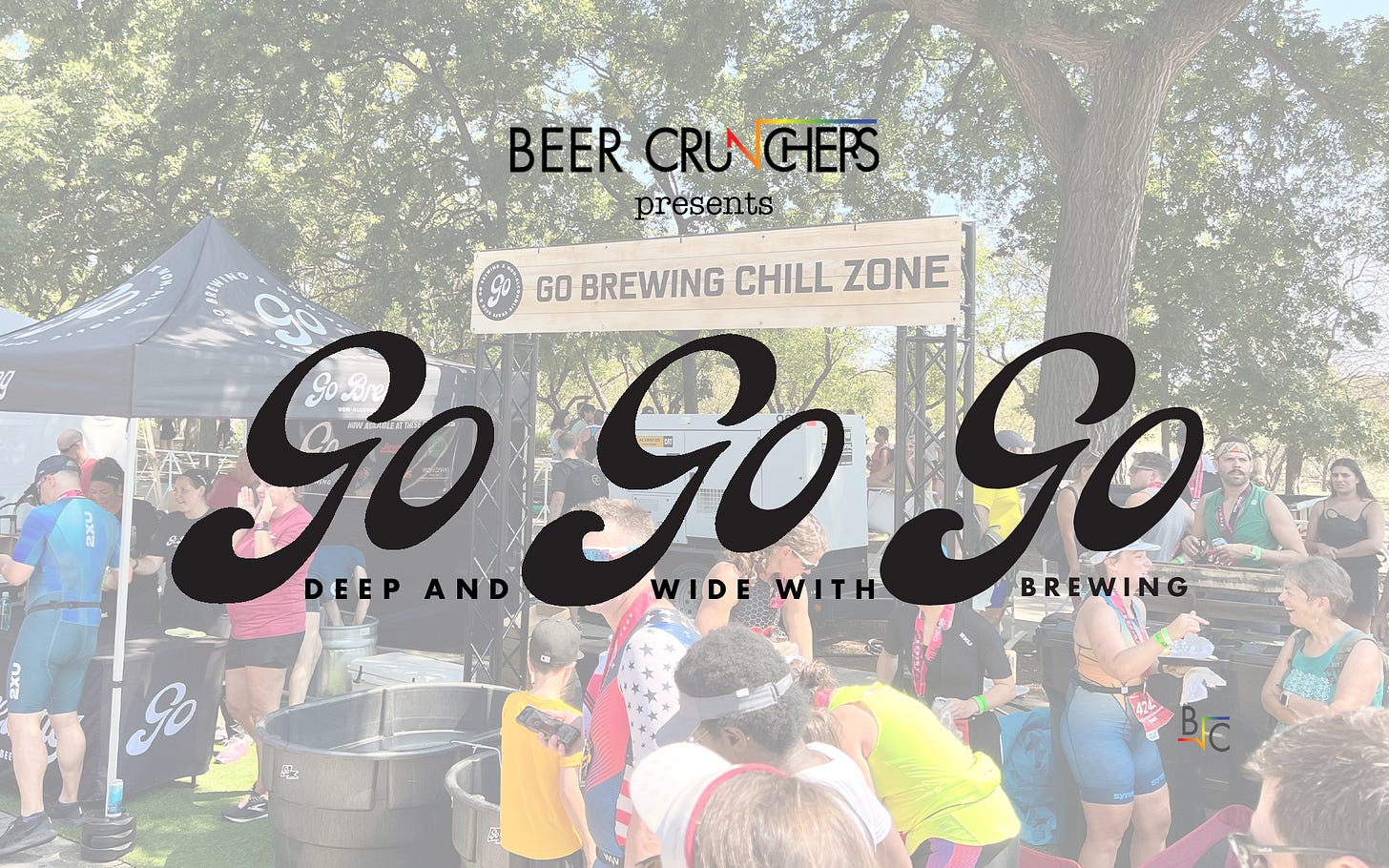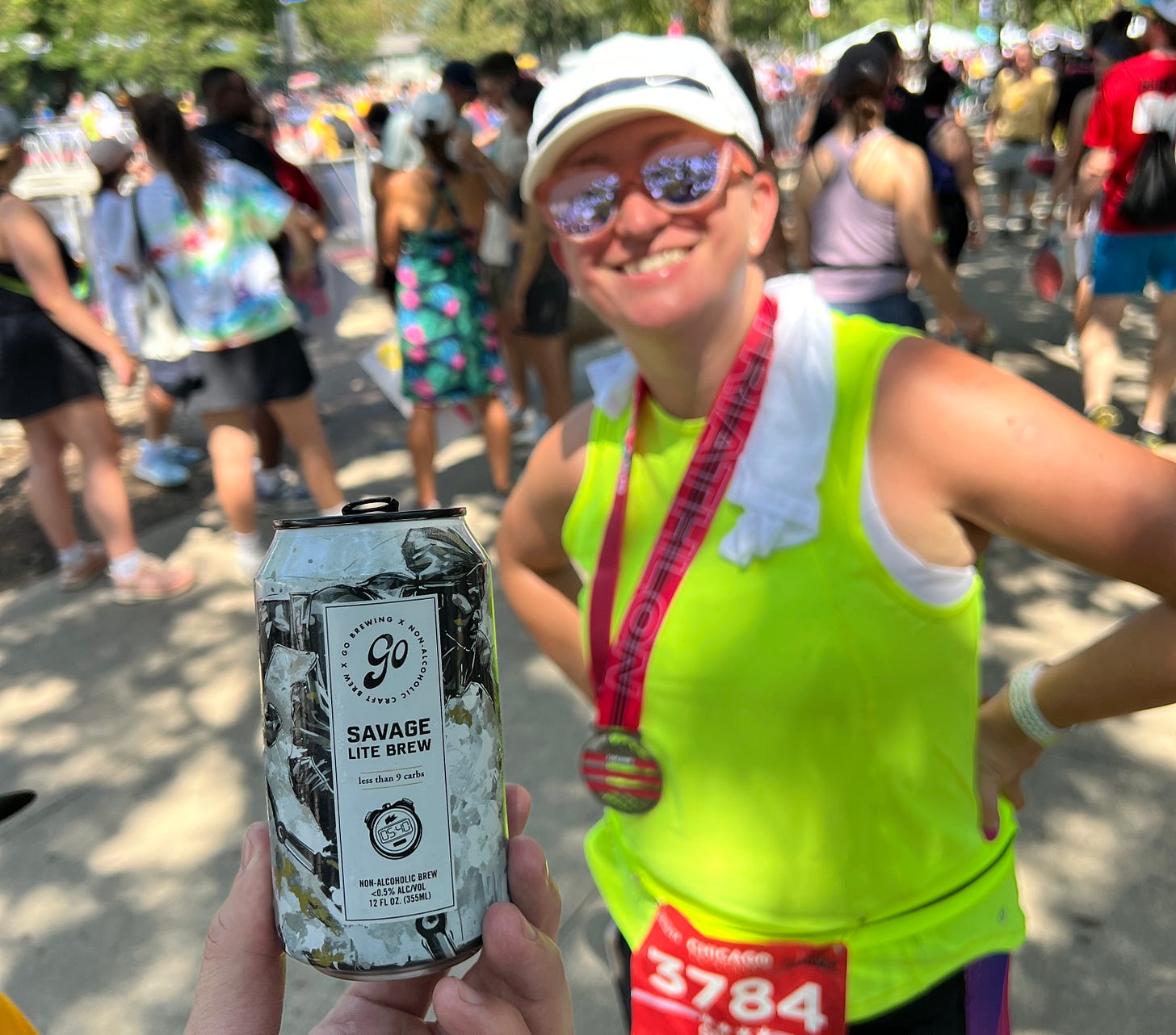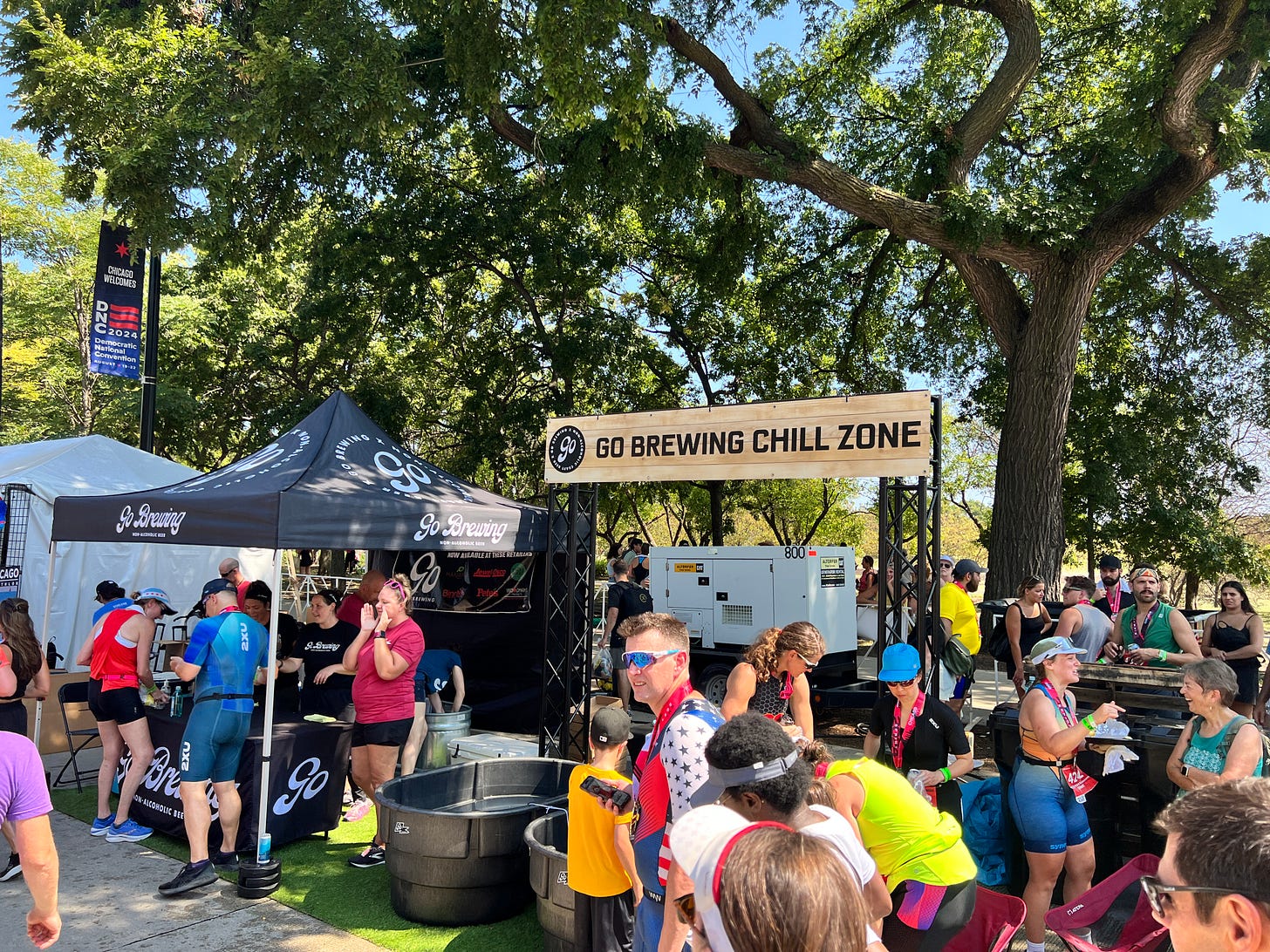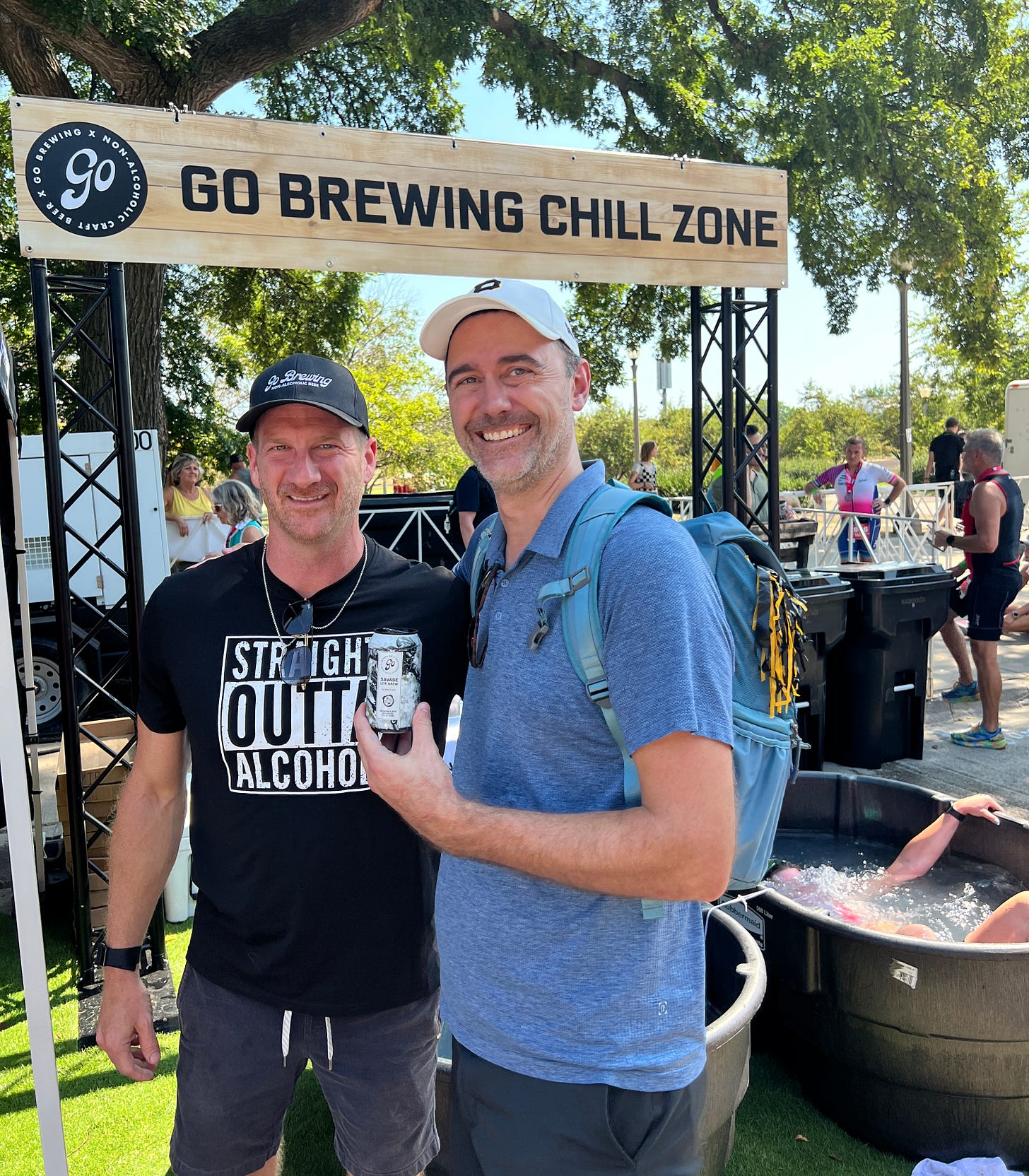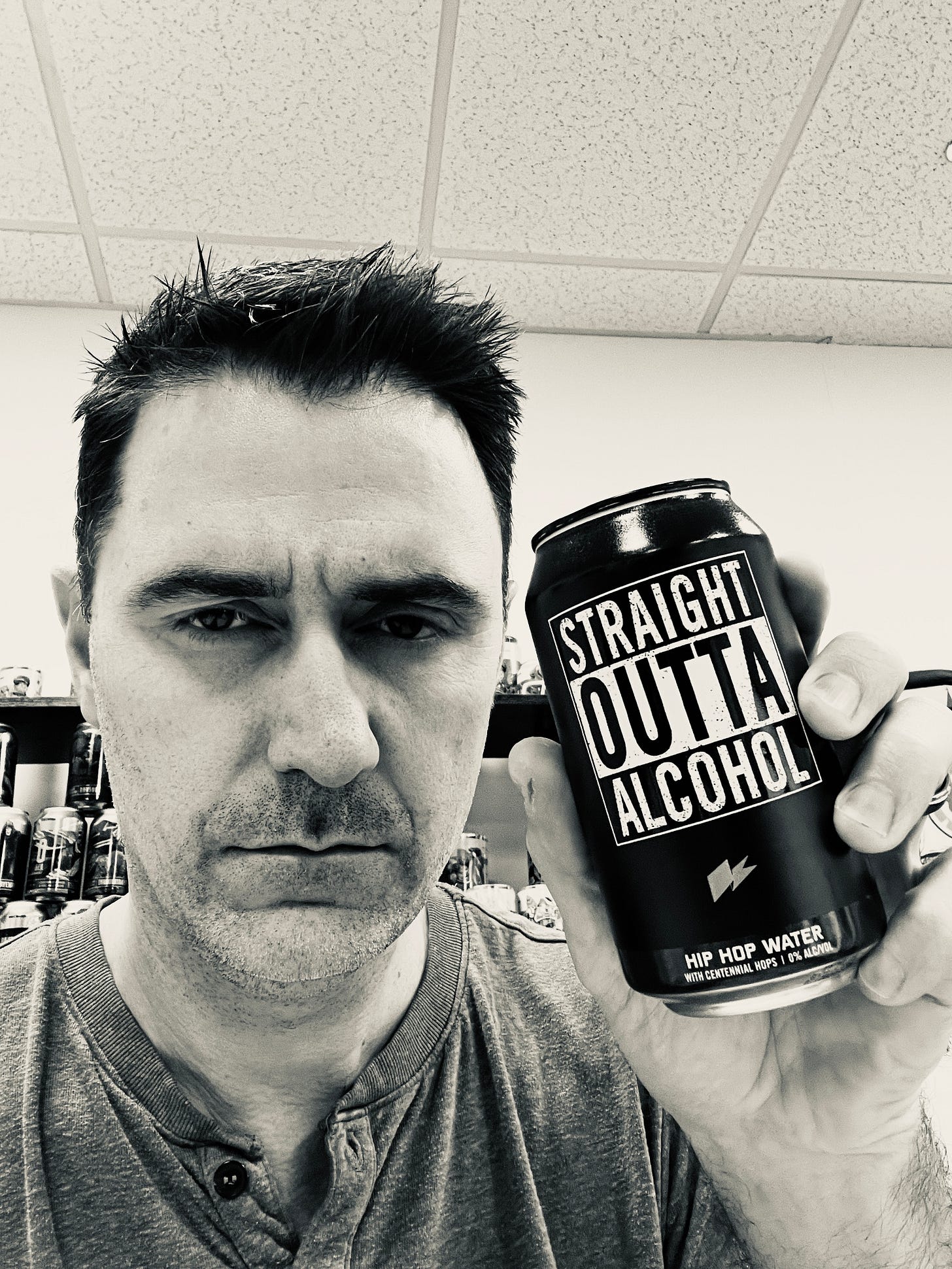Go Deep and Go Wide with Go Brewing
Sampling beer is an effective strategy to engage with shoppers in real time, offering an immediate chance of conversion. This approach requires little investment beyond the time of the sales or marketing professional, along with some beer, ice, and promotional materials like stickers. While these brief interactions can effectively capture attention, they rarely foster the deeper customer relationships that can pay long term dividends. To cultivate lasting connections, breweries need to go deeper, which often involves pulling out the checkbook.
Both my wife and I like to stay in shape with Peleton, but neither of us had previously been into competitive races. So when she committed to doing Chicago’s Sprint Triathalon in late August, you better believe that the kids and I were going to be there to cheer on this big moment. By the time we tracked her down at the finish line, she had already received a celebratory beer. After closer inspection, it was a non-alcoholic beer from Naperville’s Go Brewing, one of the fastest growing breweries in the region. They turned out to be a sponsor of the race, putting an NA beer in the hands of each interested individual after they crossed the finish line.
As we walked through the post-race party, complete with sponsors of all shapes and sizes, I saw a Go Brewing activation area. We walked over to check it out and it was full of proud racers, enjoying a their NA beer, soaking in their accomplishment. The setup had a traditional tent to get a free beer and swag, along with the Go Brewing Chill Zone, complete with two ice baths (!) and space to hang out and grab a table.
I had exchanged pleasantries on Instagram with the company’s founder Joe Chura before, but we’d never had the chance to meet in person. Within 30 seconds of spotting each other, we were getting deep into marketing, activation, and data. I just can’t help myself.
Turns out, Joe is my entrepreneurial spirit animal with his former tech founder approach to business and passion for the problem that his beer company is solving. Unfortunately I had two cranky kids that I needed to get out of the 95 degree heat, so I followed up and asked Joe if I could pick his brain and share some of his insights with you all. He not only obliged, but put a lot of effort and wisdom into these responses. Enjoy 👇
It was fun to get to meet you so naturally at, of all places, a marketing activation. Where do on-site activations rank in importance to you as far as brand building goes? As you’ve participated in more and more, has your view of these types of opportunities changed? How do you think about them as far as impactfulness versus digital marketing initiatives, whether personal preference for Go Brewing or what you’ve already felt the results of?
My view has changed. We built a calculator to help analyze opportunities as we were getting pricing from events that didn't make much sense. We use a CPM (cost per thousand attendees) model plus a multiplier from 1 to 5, with the latter being most in line with our target audience. For example, an athletic event would be a multiplier of 3 to 4, whereas a traditional beer fest may be a 1 based on historical feedback. This calculation, though imperfect, allows us to evaluate the value of the event.
Over time, we have found that certain sports, like triathlons and Hyrox (where we are a national sponsor), best fit our brand. Golf, for example, has surprisingly been a much less relevant audience for us to date (at least in Chicagoland). While we are served at some courses, sampling and participating in golf events have not been fruitful.
It's interesting to compare the ROI or brand attribution events to digital marketing efforts, as we have direct attribution from Meta, Amazon, Google, Email, SMS, and similar channels. With events, we do ask a post-purchase survey question on how folks discover Go, and less than 5% of our customers attribute events we are at to them finding out about us. However, the cohort of customers that have discovered Go via events ranks in the top three channels for LTV (lifetime value). Therefore, we can surmise we get fewer customers but more valuable ones.
As of now, it’s still a matter of trial and error and refining our value calculator. There’s also a real factor in creating your luck, as we’ve met chain buyers who hadn't heard of us and were impressed, which has led to unplanned commitments.
As is life, luck doesn’t happen sitting on the couch. You gotta show up.
I noticed that you had two ice baths available that were worked into the theme. How important do you find having a memorable component like that, in addition to the standard tent giving away beer and swag, maybe places to sit? Have you tried anything else like this to serve as the centerpiece of an activation? Are there any fun ideas that you haven’t bitten off yet but you’d love to try someday (that aren’t a secret)?
Along with brand building, our goal is data collection at events, and you need a quid pro quo; therefore, memorable activations are critical. I’ve observed that people will have a post-race beer at many events and often don’t realize what brand they are consuming. I know I have been in that boat, and if there’s no follow-up, it feels like a missed opportunity.
We think about the audience at the event, and nothing is off the table. For example, with Riot Fest, we were going to build a large carton as a tent and have monks pop in and out to create intrigue. We chose a different path. Below are a couple of ideas we have executed:
Beer Mileish activation: Drink a GO as fast as you can, run 1/10 mile on a treadmill, and get your score compared to others. This is happening now at all Hyrox events across the country, and there’s an online component, too. It combines data collection with competition and allows us a fun way to reach out with a rebate or offer by providing a leaderboard.
Taste test challenge: This challenge will be at Riot Fest and is something we did at Oak Park Beer Fest last year. We sample a Go style against an alcoholic version and see if the taster can tell which one has alcohol. If they can, they get to claim victory. Fun fact- over 50% get it wrong. For us, it’s a win/win regardless of the outcome.
Note: Joe followed up with me after Riot Fest saying that Go Brewing collected 1,000 e-mails from participants doing the challenge 😳
You mentioned that you’re sponsoring Riot Fest later this month which is incredible. Have you ever done an activation at a music event like this before? How do you approach that opportunity differently than an athletic event like the Triathalon? Do you have to switch gears in some ways since it’s a different angle for the NA Beer occasion in some ways?

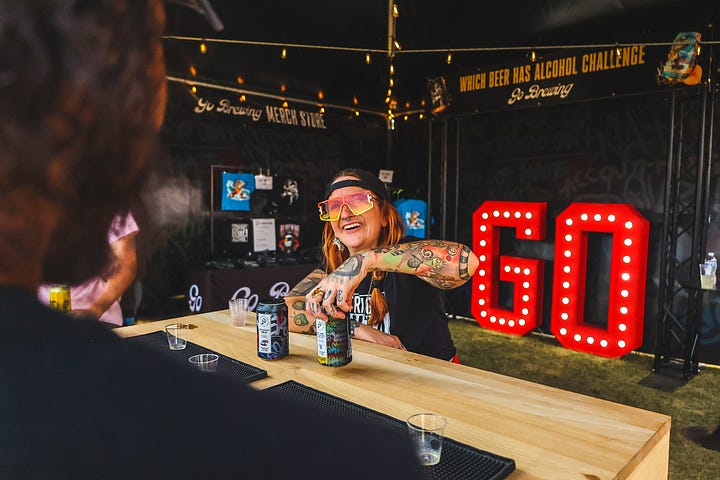
We have participated in a few music festivals, but nothing like Riot Fest. Having gone last year and seeing the lack of NA beer options, we wanted to see how we could get our beer everywhere and make it as accessible as alcoholic beer. We hypothesize that it will be a long day, and folks will be thirsty for beer, but many will intentionally limit how much alcohol they consume.
We approach ideas by considering the environment and audience, as activations are not one-size-fits-all.
Here are a few questions we ask internally:
Will it be inside or outside?
Do we need WiFi (for Beer Mileish, we do)?
What will be an appropriate level of effort with staffing?
Does the staff need ample training?
Is this going to be fun?
How will the audience be dressed?
How will they respond?
What’s the goal?
What data can we collect? For example, at one event, we tested four different canned water designs to see what would people gravitate to in real life. It was eye-opening as we got enough data to support us NOT using any of them, which led us to the concept of Straight Outta Alcohol.
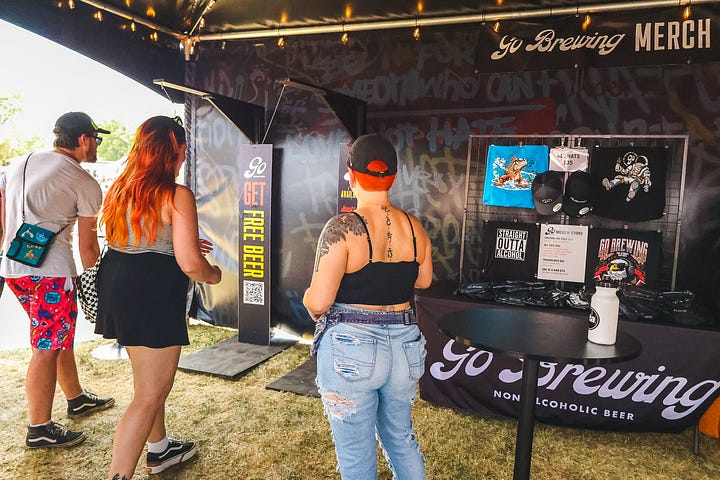

I’m a big fan of hop waters and especially like the fact that craft breweries can produce them and test the NA market without requiring a lot of new capital investment. The news that Athletic Brewing was discontinuing their Day Pack was interesting to me and in the quotes I saw, they pointed to the small size of the market and the lack of growth it’s experiencing for their scale. That’s all very fair and valid. I had a conspiracy theory though that they also shouldn’t want to validate the hop water category since the barriers to entry are so low compared to NA Beer, and the two can compete for some of the same occasions. As a brewery currently making both, could you ever see yourself strategically moving away from Hop Water to focus on the product that’s harder to replicate? Or do you think it will always be a natural extension for your NA portfolio?
We intended to build some other brand extensions outside of hop water but found ourselves in a predicament with venues. Many concessionaires, despite contrary state laws, consider our product to be alcoholic. Therefore, we needed to find a better way in the door, as we didn’t have distribution in all the markets where we were participating. The water category, we found, is also protected at venues. Hop Water was a great solution as it’s not really water and not really beer and it has 0% ABV. So.. we created Straight Outta Alcohol. The sales are decent, but based on Amazon data, it's clear that you need a mixed pack with various flavors to compete at a high level. We plan to innovate in a slightly different category that we are more passionate about, but never say never. It will not be something we push to retail.
To note, we pasteurize our hop water, so while it may be easy for others to experiment, there are still significant safety concerns to be aware of. To sell on other channels, it’s a good idea to also understand the economics and strategy of online sales.
I love following the rise of NA Beer, but always warn industry members that they have to treat it more like a tech start-up when it comes to the time horizon needed to become a profitable company. From your standpoint and experience, how much of that is true or false? Is overspending on marketing a must for a NA brand in the early years? Has the groundwork laid by Athletic Brewing alleviated any of that, in your opinion?
Having built two tech start-ups, I wish building an NA brand was more similar. With software, you can get started by renting server space on AWS (or similar cloud servers) and by having some technical knowledge. You can get to an MVP with 1-2 people, including yourself.
Contrast this to a brewery, where if you choose to manufacture and brew yourself, you can’t do much until all of the infrastructure is in place. With non-alcoholic beer, you also add significant costs for a needed pasteurizer and a properly equipped lab. From a business standpoint, once you’ve made the investment and started to find a product-market fit, you are now at a similar place to a tech company with significantly more risk.
From a time horizon, I’ve found there’s a significant difference between brewing and scaling to become a national brand. Therefore, the time horizon can be long relative to another industry as if you don’t co-pack, then you must balance production supply and demand while maintaining cash flow.
From a marketing perspective, there are many more sales channels and opportunities than alcoholic beer. This includes, but is not limited to, DTC (website sales), Amazon, online wholesale, and more. Each of those channels requires marketing spend, and in my view, it’s an efficient way to get liquid billboards at scale in fridges across the country. Athletic Brewing has done a great job creating awareness for our emerging category, but there are still a lot of people who are unaware of the innovation in non-alcoholic beverages, which does require further advertising effort and education. As an example, My Mom thinks I created the category 🙂
The hope when you build and make your own product (which I wouldn't trade for anything) is that you trade a lot of short-term pain for long-term gain.
These questions I asked were all top of mind in part because marketing activation is an area where I’ve not been very data-driven to this point. We know it’s crucial to go deep for that 5% AND wide for the other 95% when building an audience, but it’s not so easy to pinpoint where to invest and whether the cost is justifiable. So many investments in brand building aren’t specifically measurable, but Joe provides many different examples of how to improve upon this guessing game that we’re forced to play.



